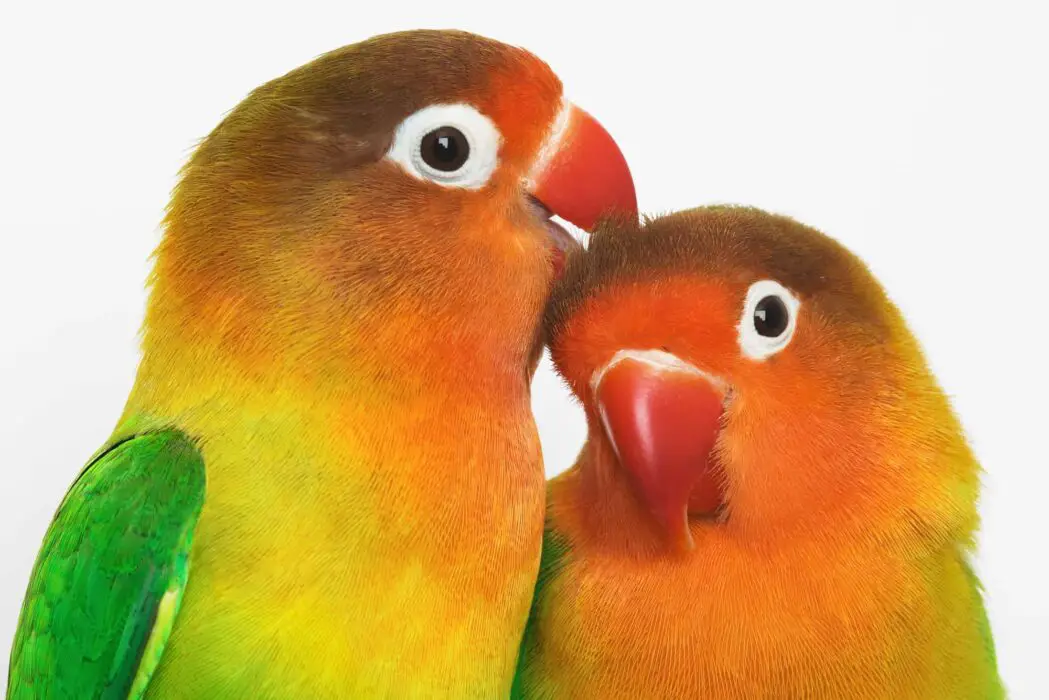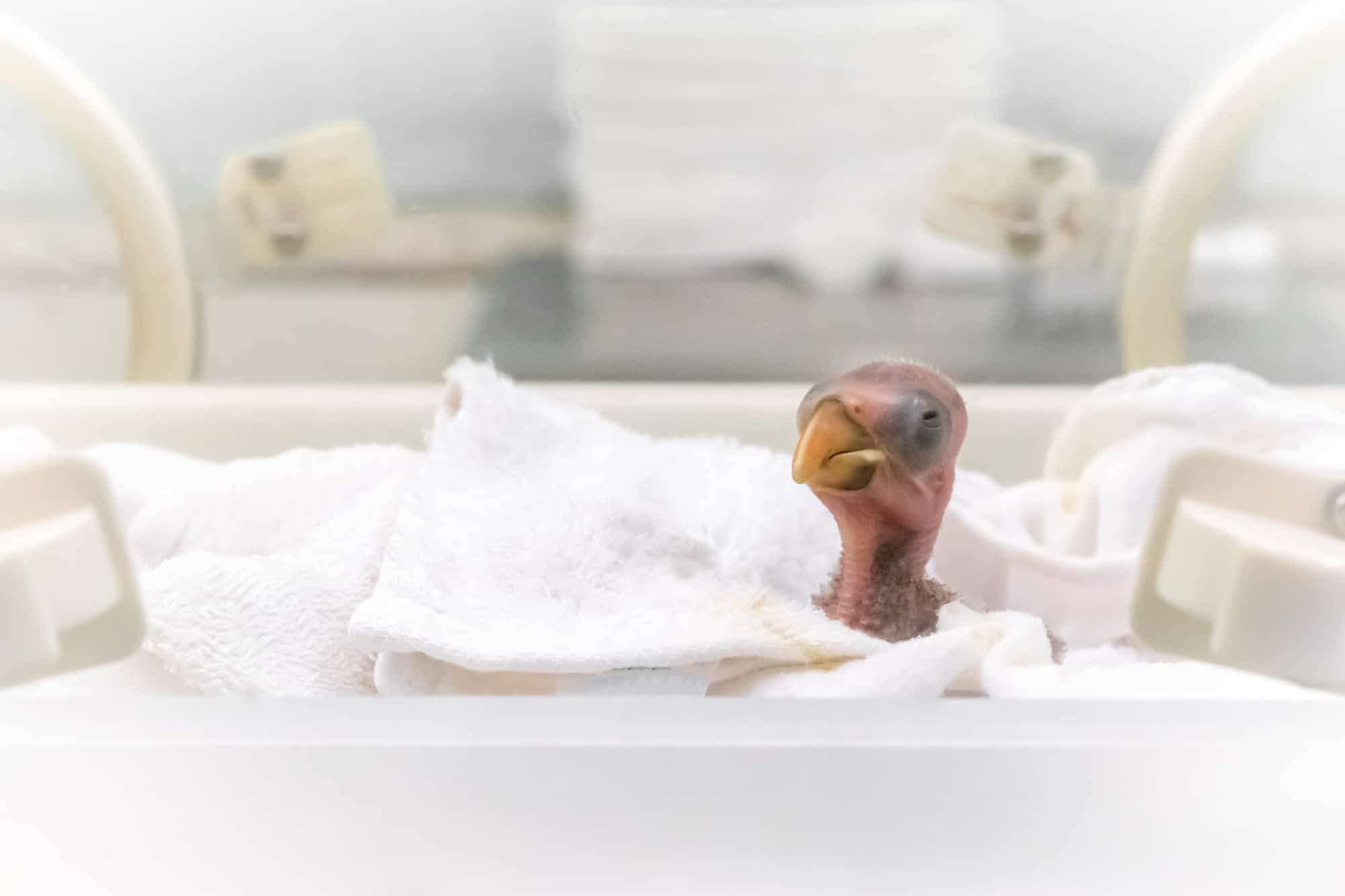When you buy a female lovebird, you need to be aware of the bird’s reproductive system, its functions, its needs, and so on. Even without a male partner nearby. Because you’ll soon find out that a female lovebird lays eggs in any case. This is well in here nature. But how often do they do it? What should you do as an owner to help the little pet? We’ve already covered the topic of conure eggs, but are lovebirds any different?
In general, lovebirds lay eggs around 5-6 times a year in the wild. Each batch consists of around 5-6 eggs as well. It takes around two days for each egg. However, breeders and owners strive for round 2 or 3 clutches a year for the birds in captivity. Besides, they aren’t limited to the natural spring and summer breeding time that lovebirds in the wild prefer.
If you have a bonded couple, you need to be extra attentive to their mating and female health. Too frequent clutches may suck the life out of the female and deplete her of nutrients.
Thus, let’s check how you can control the process as an owner.
A Full List of Lovebird Types (With Photo and Video)
When Do Lovebirds Lay Eggs?

If we are talking about a bonded pair, they usually are most predictable than single females. After mating, it takes around 10 days fro the female to start laying eggs. After that, it’ll take her around 10 days more to lay all the eggs, considering the two-day period between each in a clitch and an average batch being around five eggs.
As the lovebird lays all the eggs, the incubation period starts. It takes around 25 days. Note: this is an average period. Be ready for a couple of days’ deviations.
All is easy when you have a couple and know when they bond. But, on the other sides, if you have females only, it’ll be harder to tell when the bird will lay eggs. And she will do it; they’ll just be unfertilized.
Follow this quick overview to be ready at the appropriate time:
Lovebirds reach sexual maturity at around six months or a year of their life. The first signs will appear somewhere t this stage: your bird will gather sticks, feathers, paper, and so on to form a nest. This process is hard to miss, even if you regularly clean the cage. I’d recommend leaving some clean materials for her to build that nest. Otherwise, it’s in danger of plucking its feathers for building materials.
Are Lovebirds Cheap? How Much for a Parrot?
What Are the Common Issues of Laying Eggs and How to Help Your Lovebird?

I hate to bring bad news, but you should be aware of the hard time lovebirds have with laying eggs. Often, the female has issues with expelling an egg. It’s commonly known as egg binding.
It’s an emergency that requires veterinary help. Vets can help a lovebird with a stuck egg easily, but you have actually to notice the issue on time to alleviate the discomfort.
Check your bird for the following signs:
- overall discomfort and weird body language
- depression
- loss of appetite
- insomnia
There are some recommendations online on how to help it release the gg, but I always recommend visiting a vet, especially with such sensitive issues. Better safe than sorry.
There are, of course, some steps that you can undertake to make your bird generally healthy for the process and keep it in a comfortable surrounding.
Considering that lovebirds lay eggs rather often compared with other parrot types, it’s essential to keep track of your bird’s health and learn to take care of it.
- Keep a healthy diet. Laying eggs may swiftly deplete a lovebird of essential nutrients. Thus, your task is to keep a healthy and balanced diet for your pet. Make sure to limit the number of fatty products, and increase green and veggies. Among the nutrients, a female with eggs needs most of all calcium-rich products like dark green, citruses, and possibly eggs.
- Give them more extended rest periods between clutches by moving to a somewhat darker space. Considering that lovebirds mostly lay eggs during spring and summer, sunny periods, placing them into a darker corner to mimic winter is a viable strategy. But do not leave the bird altogether without the sun!
- Separate the birds after the female starts laying eggs, so she has a calmer environment and plenty of time to sit on the eggs. Even if they are not fertilized. And, overall, provide as much calm as possible.
Should Lovebirds Be Kept In Pairs?
When Do Lovebirds Couples Have Eggs?

If you have a couple of lovebirds and would like to greet tiny chicks into the world, they’ll have to mate. As I’ve mentioned before, lovebirds reach sexual maturity at around six months. However, it may take up to a year, so I suggest waiting till this time.
As it gets mature, you can notice the birds bonding and mating. Lovebirds are very, well, loving creatures. So they’ll get all lovey-dovey soon.
As you notice the birds getting closer, provide the necessary conditions – a spacey cage with a place for the nest (and a nesting box itself), a peaceful environment, plenty of sunlight, and mentally stimulating toys.
Also, an important tip – give your birds a separate food and water bowl each. Otherwise, they may get competitive over food.
During this period, leave clean nest-building materials for the like papers, old feathers, wood chips, dried grass, etc.
When the female lays eggs, you can actually check whether eggs are fertilized. The detailed instructs can be found in the corresponding conure article. I’ve mentioned it in the beginning. Find the link there.
Overall, the nesting period is one of the cutest times for parrots. I like observing how lovebirds show their natural instinct and get ready for the chick.
Please, take care of your birds at this critical time. Especially concerning the female’s health.


